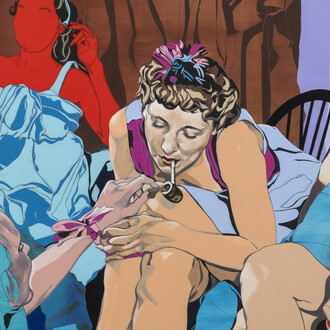Typically, when the term "intersection" is mentioned, people often think of it as a point — a singular moment where two or more objects meet or cross. This could be a place where two lines intersect, or where a car reaches an intersection in the road. It’s easy to imagine it as a specific, single event, a point of interaction or connection. However, the concept of "intersection" can be much broader, especially in three-dimensional space. While the intersection of two lines will always be a point, when it comes to planes, the intersection becomes more complex. For instance, when two flat planes (such as a wall and a floor) meet, they don't just meet at a point; they create a line of intersection. This is where the planes continuously meet, forming a line that extends across the planes, rather than being confined to a single spot.
This distinction is important: an intersection in 3D space isn't always a fleeting moment or point. It can also represent something more persistent, like a line where planes continuously interact with one another. In this way, an intersection can take on a form of longevity or continuity, rather than being limited to just a momentary encounter. By recognizing that intersections can form lines, we broaden our understanding of what it means for two objects or planes to meet. This expanded perspective encompasses not only discrete moments of interaction but also the ongoing relationships between them — a line, a continuous boundary that extends beyond a single point of contact.
In the realms of exhibition design, artistic practices, and curatorial processes, the thoughtful utilization of three-dimensional space plays a pivotal role. Examining the concept of the intersection line within these fields reveals that it is not just a geometric element, but a powerful tool that enhances spatial engagement. This intersection line encourages deeper interaction between the space, objects, and participants. It acts as a conduit for dialogue, enriching the viewer’s experience by guiding their movement and perception, while also creating a sense of continuity and connection within the exhibition. In this way, the intersection line transcends its mathematical origins, becoming an essential element in the creation of meaningful, immersive environments.
There are several ways in which two or more planes might cross, which enhances the overall experience. For example, displayed prominently in the In search of humanity exhibition at Kunsthal Rotterdam, Forge (2008-2012) provided a striking commentary on human rights and governmental accountability. The exhibition, running from September 30, 2023, to March 3, 2024, was Ai Weiwei's (1957) most extensive retrospective, showcasing a broad range of his works, including paintings, cultural readymades, LEGO creations, sculptures, installations, photography, and video art.
Ai Weiwei’s Forge (2008-2012) is a powerful installation in response to the 2008 Sichuan earthquake, which caused the deaths of thousands, many of them children, due to the collapse of poorly constructed school buildings. The artwork is made up of metal shards collected from these schools and painstakingly placed to cover the floor of the exhibition room. Forge was prominently displayed in Kunsthal Rotterdam's In search of humanity exhibition, providing a striking commentary on human rights and governmental accountability. The scale of the installation and the painstaking effort involved in organizing the metal fragments emphasize Ai Weiwei's commitment to highlighting the tragedy and advocating for social justice.
This artwork, particularly within the context of this exhibition, emphasizes all the themes mentioned above. Its three-dimensional nature serves as a pivotal moment for the viewer, standing out amid the many other striking pieces in the expansive retrospective, yet still managing to leave a lasting impression. The "intersection line," where the wall meets the floor, creates a unique foundation for the work. In this case, the three-dimensional aspect not only intensifies the artwork's impact but also contributes to the exhibition's overall design and curatorial vision. The scale of the piece is also quite striking—not only because the metal fragments take on various forms, filling the exhibition space, but also because the work consists of two main components. One in a two-dimensional representation of the metal fragments on the wall, while the other allows them to flow onto the floor, transforming the pieces into a tangible, three-dimensional experience.
In conclusion, the concept of the "intersection line" in both art and spatial design reveals a dynamic and transformative approach to how we experience and engage with space. In Ai Weiwei’s “Forge,” this intersection is not just a physical meeting of planes, but a metaphorical one, where the tragic history of the Sichuan earthquake meets the ongoing conversation about human rights and governmental responsibility. The installation’s three-dimensionality enhances this interaction, allowing the viewer to not only see but also feel the continuous connection between the wall and the floor, between the metal fragments and the space they occupy. By using the intersection line in this way, Ai Weiwei masterfully deepens the emotional and intellectual impact of his work, guiding the viewer through a poignant and immersive experience. As we consider the broader implications of intersection in both art and architecture, we see how it can shape our understanding of continuity, interaction, and the enduring relevance of past events in shaping present-day dialogues.
















